Although the concept may repulse us, parasitism is a successful survival strategy in nature, so much so that even the simplest beings, such as bacteria, have their own parasites: bacteriophage viruses. Some parasites are so sophisticated in their way of life that they become veritable hackers of their hosts. Among those that have chosen humans as their home, some are very familiar to us, such as lice or ticks, species that feed on our blood. Others are also well known, such as the malaria plasmodium, tapeworms, filariae, intestinal worms or the scabies mite. But there are many more unknown creatures in the vast repertoire of human parasites.
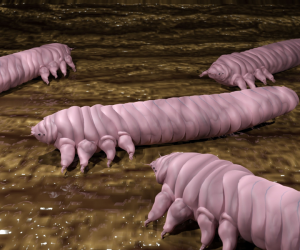
Demodex
It may be unpleasant to know this, but most people carry tiny parasites on their faces all the time: two species of Demodex mite, D. folliculorum and D. brevis, smaller than 1 millimetre, inhabit hair follicles and sebaceous glands, especially on the face, feeding on our sebum and travelling across our skin at night. We acquire them throughout our lives and almost all older people carry them. They usually cause no problems, but if they multiply too much, they can cause demodicosis.
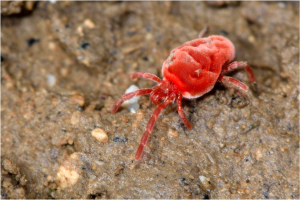
Trombicula
Unlike Demodex, mites known as chiggers, red bugs or harvest mites, which also belong to the Trombiculidae family, can be quite annoying, despite their tiny size of less than half a millimetre. Like ticks, to which they are related, they are contracted by rubbing against grasses. However, unlike ticks, they do not feed on blood but on skin cells, which they burrow into with their mouthparts, causing itching and irritation, symptoms of trombiculosis. Many species are found throughout the world.
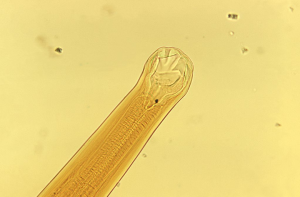
Cutaneous larva migrans
It is one of the most common infestations in travellers to tropical countries who are unwise enough to walk barefoot in water or on land or sand. These nematodes of the hookworm family live in the intestines of animals. Eggs excreted with faeces hatch into tiny larvae that can burrow through our skin, usually on our feet, and form tunnels that are visible from the outside. Fortunately, these are animal parasites that do not penetrate deeply into humans; other hookworms that specialise in parasitising humans do reach the bloodstream and end up in the intestines.
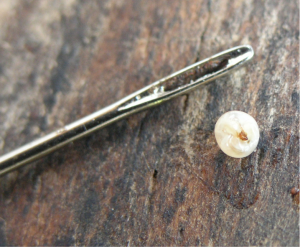
Tunga penetrans
One of the most overlooked parasites, but very common in tropical areas, is a small animal that is not a tick, although it could pass for one. Tunga penetrans (also known as jigger, chigoe flea or sand flea, among other names) is a small flea of 1 millimetre in size, i.e. an insect. It begins its life in the sand, which is why it usually attaches itself to feet. While the male flea behaves like other fleas, the female burrows into the skin and remains there for life, causing inflammation and sometimes serious wounds that can become gangrenous. There are no effective treatments, so these fleas have to be removed surgically.
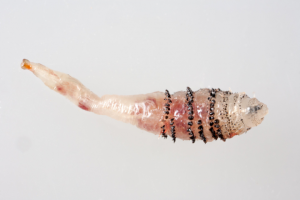
Human botfly
Unfortunately for us, there are a number of fly species that can cause myiasis, the infestation of tissues by live larvae. One of them, Dermatobia hominis, prefers us to other mammals. Its mode of action is curious: the female lays her eggs inside a mosquito. When the mosquito bites us, the eggs or larvae take advantage of the bite to gain access to our skin and burrow underneath.
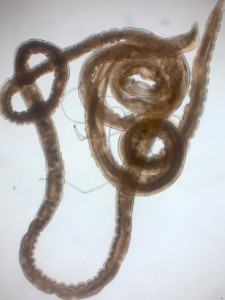
Gongylonema pulchrum
One of the strangest parasites of humans has us only as accidental hosts, as its natural habitat is other animals. But its eggs, expelled in faeces, can be ingested by cockroaches or dung beetles and end up in our food or water. It is peculiar because of the place where it lives: the mouth. It is a worm that lodges in the oesophagus and migrates to the buccal mucosa, where it lodges inside the cheek or lips, on the gums or under the tongue. It can grow to several centimetres in size, so its presence is noticeable as it moves under the skin of the mouth.
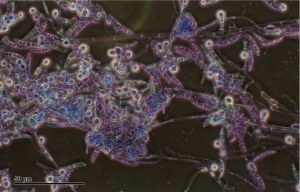
Rare fungi
Human parasites also include some fungi. We are familiar with candidiasis and athlete’s foot, which are caused by several types of fungi. But some cases are much rarer. The oomycete class includes crop pests such as grapevine downy mildew, but in the genus Pythium, which often attacks plants, there is a species that grows on mammals, including humans. Pythium insidiosum can be contracted from stagnant water or soil and causes severe ulcers on the skin and sometimes inside the body. It is very invasive and, as the name suggests, difficult to treat.
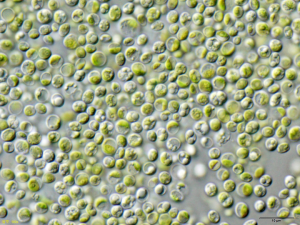
Algae
Strangely enough, humans can also suffer from algae infections. Chlorella is a microscopic, single-celled, photosynthetic algae that normally lives in nature without causing problems and has even been tried as a food and dietary supplement. However, there have been cases of chlorellosis affecting the skin or even internal organs. Protothecosis is caused by another related algae, Prototheca, which has lost the ability to photosynthesise and has specialised in feeding on organic matter. It enters the body through the mouth or nose, spreads through the blood and can colonise various organs, although fortunately this is rare.
Comments on this publication